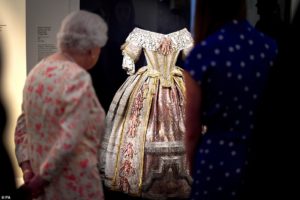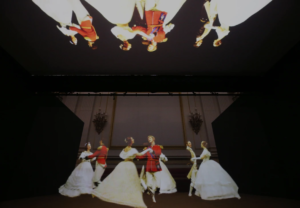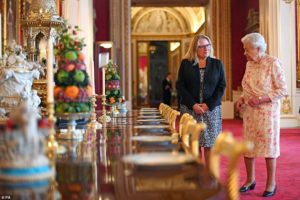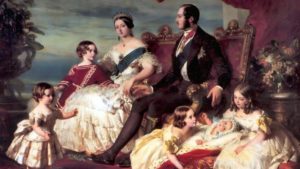Bush’s war supremo brought about his own worst fear: another Vietnam
July 4, 2021
The last bit was true then, and it continued to be until his death. Rumsfeld’s critics on his refusal to commit sufficient fighting troops in either Afghanistan or Iraq could fill a football pitch. (The first of many damning appraisals appeared in 2007, entitled Rumsfeld: An American Disaster.) But the claim he benefited from criticism was so laughable to anyone who knew him that it only highlighted the catastrophic deficiencies of the man. Rumsfeld was incapable of listening to anyone who didn’t already agree with him. He was the wrong man for the job at the most inopportune time in America’s history.
As several obituaries of Rumsfeld pointed out, his first stint as defence secretary, under Gerald Ford in 1975-77, happened under arguably worse circumstances. A survivor from Richard Nixon’s administration, where he stood out for his unwavering commitment to civil rights, Rumsfeld was the White House chief of staff during the last days of Saigon in April 1975. Appointed defence secretary shortly afterwards, Rumsfeld regarded it as his mission to keep the military ready and competitive but essentially inactive. This wasn’t cowardice but good Cold War strategy.
Rumsfeld’s reputation as a strategic thinker was subsequently borne out by his wildly successful transition to the business world. He was also a clear, no-nonsense communicator, whose fondness for aphorisms and golden rules became the stuff of legend. When Rumsfeld left the White House for the first time, he bequeathed a memorandum of best practices, Rumsfeld’s Rules, 11 of which were specific to the secretary of defence. They began with the reminder: “The secretary of defence is not a super general or admiral. His task is to exercise civilian control over the department for the commander-in-chief [the president] and the country”, and included such important pieces of advice as: “Establish good relations between the departments of Defence, State, the National Security Council, CIA and the Office of Management and Budget.”
When Rumsfeld returned to the White House in 2001, aged 68, he broke almost every one of his own rules. Not only did he allow relations between the departments to become utterly dysfunctional but he so alienated the generals and joint chiefs of staff that it was widely assumed he “hated” the military. The serving chairman of the joint chiefs, General Hugh Shelton, complained that Rumsfeld operated “the worst style of leadership I witnessed in 38 years of service”. Rumsfeld treated all soldiers as boneheaded grunts, and the generals simply as boneheaded grunts with the medals to prove it.
His planned military transformations suffered from an overly technocratic mentality. He believed that the army was costly and lacked efficiency — what army doesn’t?— as though bottom lines apply equally in business and fighting. Rumsfeld wanted to remake the military as one that relied more on air power and technical advantages and less on soldiers with guns. The charge against him is that he eviscerated the military’s ground capabilities and reduced its fighting numbers at precisely the moment both were paramount to American success in Afghanistan and Iraq.
What was going through Rumsfeld’s mind? Millions of words have been spilt in the effort to explain why the defence secretary doggedly pursued a losing policy in the teeth of protests from the military. In his last year in the job six retired generals publicly rebuked him. Part of the answer lies in his character: he was a micromanager who failed to engage, a bureaucrat who despised professionals, an aggressor who disliked to fight. But the real driver of his actions can be traced back to 1975. More than anything else, even more than winning perhaps, he wanted to avoid a repeat of the Vietnam War, with its “limited war” rhetoric that was belied by the fact it was the first of what the US media have dubbed America’s “forever wars” — metastasising conflicts without a clear end in sight.
Rumsfeld emerged from his first period in the White House blaming the military for having misled successive administrations into committing themselves to an unwinnable and unpopular war. Hence, he believed that nothing the military said could be taken at face value. He was not going to allow himself to be taken prisoner by the top brass. Unlike Robert McNamara, the defence secretary most associated with US involvement in Vietnam, Rumsfeld was determined to stick to quick, in-and-out military objectives. There would be no quagmires, mass body bags, forever wars or attempts at nation-building on his watch.
Yet he was a prisoner all the same. Even though the causes and conditions were different, the Vietnam War remained the lens through which Americans judged the Iraq war. A few months after the coalition’s initial victory in Iraq in 2003, Senator John McCain, who spent five years as a PoW in Vietnam, warned the Bush administration that stopping the army doing its job, as interpreted by McCain, would risk “the most serious American defeat on the global stage since Vietnam”. By 2004, Democrats were saying: “Iraq is George Bush’s Vietnam”. Rumsfeld ended up being directly compared to McNamara, even though, by winding down, rather than ratcheting up, the US presence in the Middle East, he was doing the opposite of his predecessor. A 2005 column in the Washington Post intoned: “Just as Vietnam became McNamara’s war, Iraq has become Rumsfeld’s war”.
The successful troop “surge” in 2008 appeared to erase Rumsfeld’s Vietnam legacy. Only it didn’t. Barack Obama’s foreign policy — summed up as “leading from behind” — was Rumsfeldian in its horror of American military entanglement in foreign affairs. The Trump administration’s was even more so. More than six trillion war dollars later, with countless lives lost, if Rumsfeld leaves anything behind, it’s the lesson that America’s forever war syndrome is a state of mind, not just a reality.






 Visiting the exhibition, Victoria’s great-great granddaughter, the Queen, was “totally engrossed” as she watched virtual-reality dancers recreate a quadrille, a dance that was fashionable at 19th-century balls. “Thank God we don’t have to do that any more,” said the Queen.
Visiting the exhibition, Victoria’s great-great granddaughter, the Queen, was “totally engrossed” as she watched virtual-reality dancers recreate a quadrille, a dance that was fashionable at 19th-century balls. “Thank God we don’t have to do that any more,” said the Queen. Digital technology by a Hollywood-based production company recreates the ballroom as it looked during a ball in 1856, with images of the wall furnishings and paintings, as shown in contemporary watercolours, projected on to its walls.
Digital technology by a Hollywood-based production company recreates the ballroom as it looked during a ball in 1856, with images of the wall furnishings and paintings, as shown in contemporary watercolours, projected on to its walls. “We tend to diminish the contribution of women in particular. We assign their success to the men around them. We tend to simply forget who was responsible for certain things. So by putting on this exhibition, we are stripping away those layers of oblivion, forgetfulness, discounting, and allowing Queen Victoria the space to shine.”
“We tend to diminish the contribution of women in particular. We assign their success to the men around them. We tend to simply forget who was responsible for certain things. So by putting on this exhibition, we are stripping away those layers of oblivion, forgetfulness, discounting, and allowing Queen Victoria the space to shine.”
 The entertaining rooms and public spaces were too small, the kitchens dilapidated, the private apartments inadequate and the plumbing and heating barely functional.
The entertaining rooms and public spaces were too small, the kitchens dilapidated, the private apartments inadequate and the plumbing and heating barely functional. She also allowed Prince George — later George V — and Princess Mary to appear on the balcony after their wedding, cementing a tradition now watched by hundreds of millions. The palace balcony appearance has become so ingrained in the national consciousness that each occasion receives the most intense scrutiny.
She also allowed Prince George — later George V — and Princess Mary to appear on the balcony after their wedding, cementing a tradition now watched by hundreds of millions. The palace balcony appearance has become so ingrained in the national consciousness that each occasion receives the most intense scrutiny.


